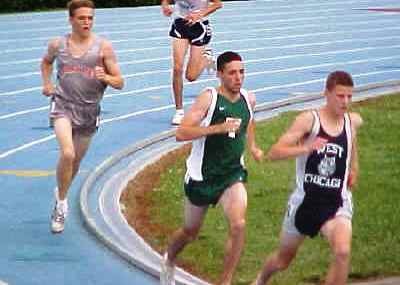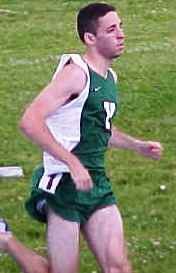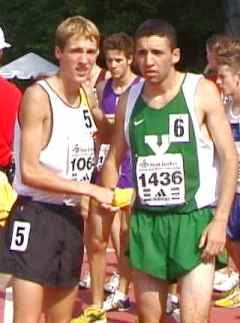Folders |
#ThrowbackThursday - Sage at IL State 2000Published by
Throwback Thursday is a DyeStat feature that allows us to remember and celebrate some of the great meets and performances that have been a part of our DyeStat coverage since John Dye founded the site. Thanks to many stories, photos and videos that have been preserved in our archives, we are able to relive and share with you some of the very best of DyeStat.com.
Sage unleashes a kick and 3,200 for the ages
By Steve Underwood
2000 IL STATE | SAGE/KELLER DUKES OF YORK STORY | 2000 OUTDOOR NATIONALS
After state that year, Sage and Keller moved on to the post-season. Sage went out to California for the Golden West Invite and hammered three laps of the mile in 3:01 before finishing in 4:04.2. Then both Illinois stars ventured down to Raleigh for Foot Locker nationals, starting with what shaped up to be an epic 2-mile battle Friday, More news |












 DyeStat wasn’t on hand at the Illinois state meet that year, but was fortunate to get some shots (however blurry) to mark the occasion. But Sage and Keller were among those who inspired the “Return of the Distance Gods” series on DyeStat, which also began in late May, and was so named in reference to a web page maintained back then by a Patrick Hoffman, who used the “Distance Gods” moniker to describe prep legends of the 1960s and 70s, like Jim Ryun, Steve Prefontaine, Gerry Lindgren, Craig Virgin, and Nelson. The “Dukes of York” story actually ran later in the series, the week after nationals, but before Sage headed to the Prefontaine Classic.
DyeStat wasn’t on hand at the Illinois state meet that year, but was fortunate to get some shots (however blurry) to mark the occasion. But Sage and Keller were among those who inspired the “Return of the Distance Gods” series on DyeStat, which also began in late May, and was so named in reference to a web page maintained back then by a Patrick Hoffman, who used the “Distance Gods” moniker to describe prep legends of the 1960s and 70s, like Jim Ryun, Steve Prefontaine, Gerry Lindgren, Craig Virgin, and Nelson. The “Dukes of York” story actually ran later in the series, the week after nationals, but before Sage headed to the Prefontaine Classic. June 16. The weekend turned out to be a tough one for Sage. The deuce, contested on a very warm, humid evening went out in just 4:29. But Ritz overwhelmed the field in the second half, with a 10-second negative split and finishing in 8:48.06. Sage was just eighth in 9:05.99, while Keller continued his remarkable string of consistent sub-9s with an 8:58.81 in fourth.
June 16. The weekend turned out to be a tough one for Sage. The deuce, contested on a very warm, humid evening went out in just 4:29. But Ritz overwhelmed the field in the second half, with a 10-second negative split and finishing in 8:48.06. Sage was just eighth in 9:05.99, while Keller continued his remarkable string of consistent sub-9s with an 8:58.81 in fourth.